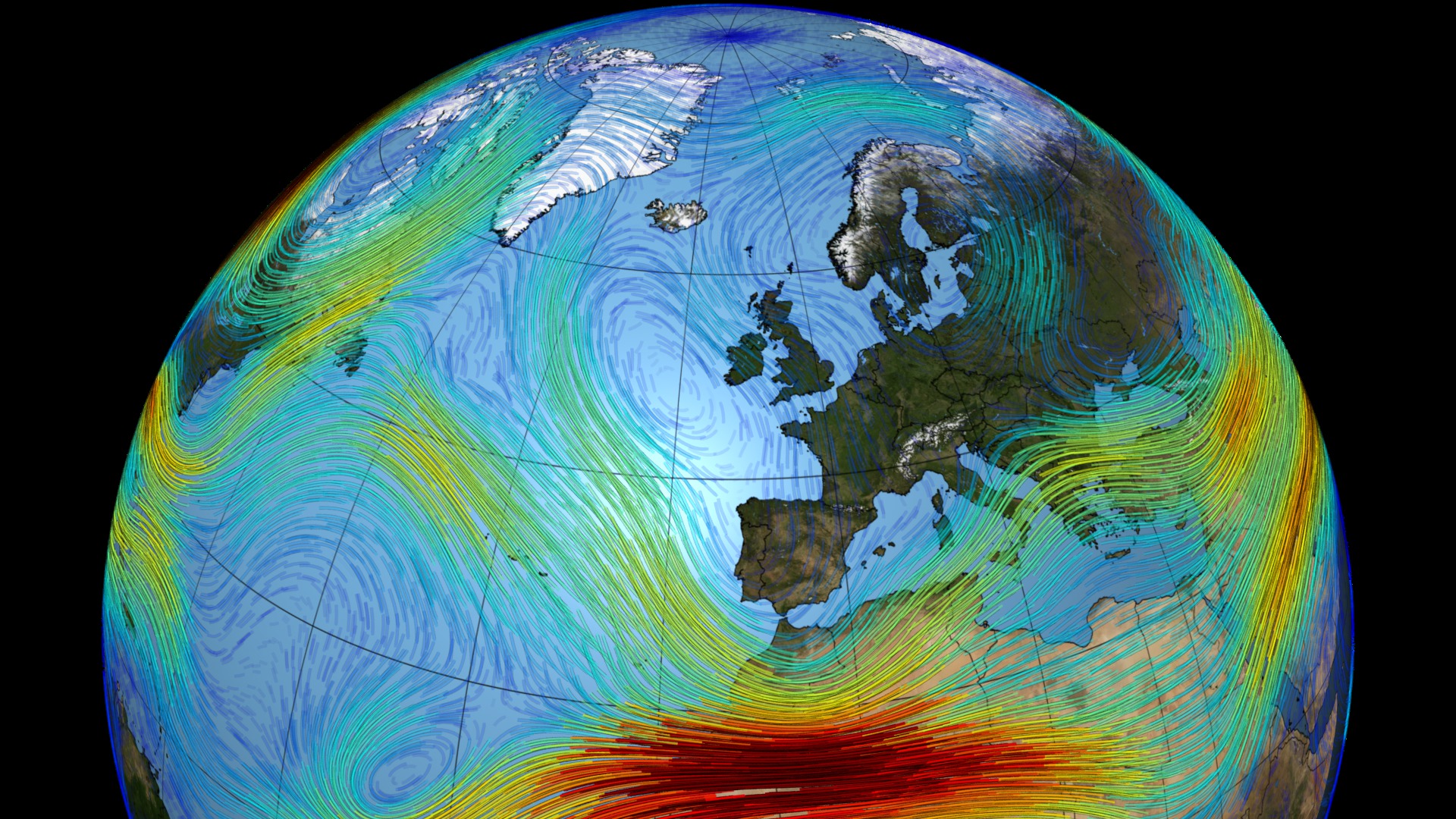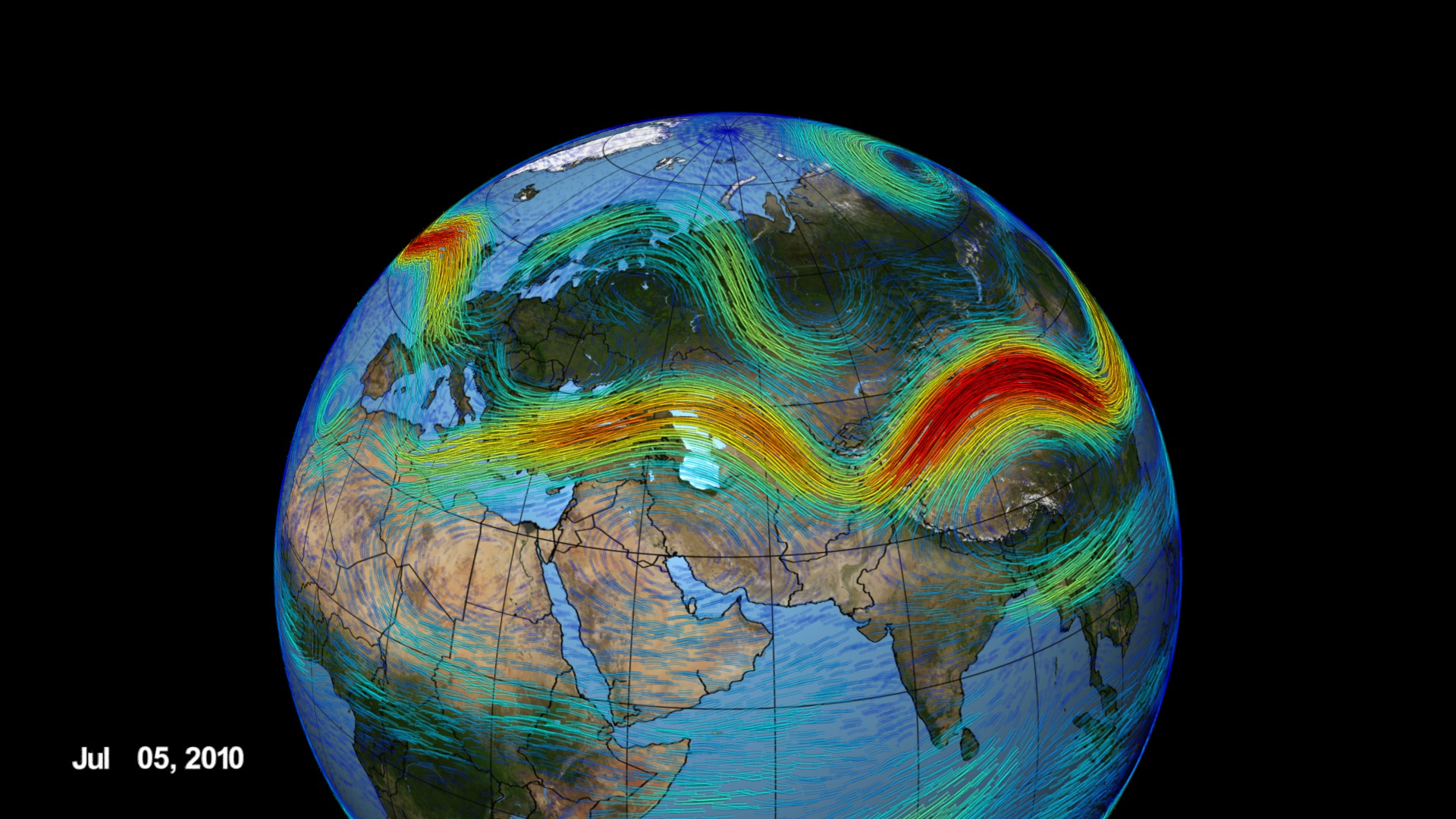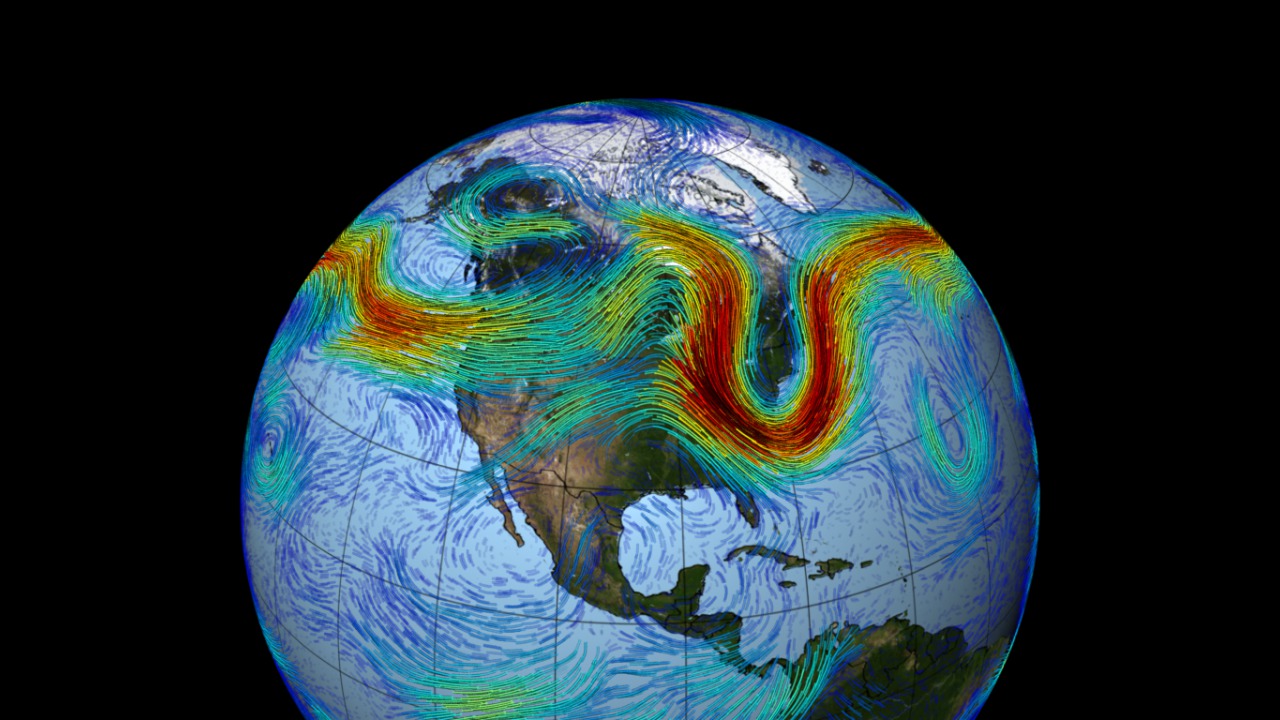Wild, Wild Winds
Powerful winds whip around Earth, affecting the planet's weather and climate. Such winds make up the Northern Hemisphere’s polar and subtropical jet stream. Undulating in the sky miles above the surface, these rapidly moving air currents flow eastward like rivers in the atmosphere. The polar jet stream travels in the mid-latitudes while the subtropical jet stream passes near the tropics. Sometimes the jets converge or park above a region. In summer 2010, the polar jet stream shifted north and lingered for more than two months over Eurasia. A stationary high-pressure area developed as a result that disrupted the normal movement of weather systems. This contributed to extreme drought in Russia and devastating floods in Pakistan. Watch the video to see a NASA visualization that shows the motions of winds above Europe and Asia during these events.

Discover how jet streams influence weather and climate on Earth.
Earth's jet streams can reach speeds greater than 275 mph. Here, the fastest winds are red; slower winds are blue.

Generally, the polar jet stream moves on higher latitudes than the subtropical jet stream.

In summer 2010, a high-pressure area split westerly winds over Russia and Pakistan, causing extreme drought and floods.

The flooding in Pakistan killed nearly 2,000 people. Satellite images show the Indus River one year before (left) and during (right) the event.
Credits
Please give credit for this item to:
NASA's Scientific Visualization Studio
Satellite image courtesy of NASA Earth Observatory/Robert Simmon
-
Animators
- Trent L. Schindler (USRA)
- Greg Shirah (NASA/GSFC)
- Horace Mitchell (NASA/GSFC)
-
Scientist
- Siegfried D. Schubert (NASA/GSFC)
-
Writer
- Kasha Patel (Wyle Information Systems)
Release date
This page was originally published on Thursday, April 3, 2014.
This page was last updated on Wednesday, May 3, 2023 at 1:51 PM EDT.


